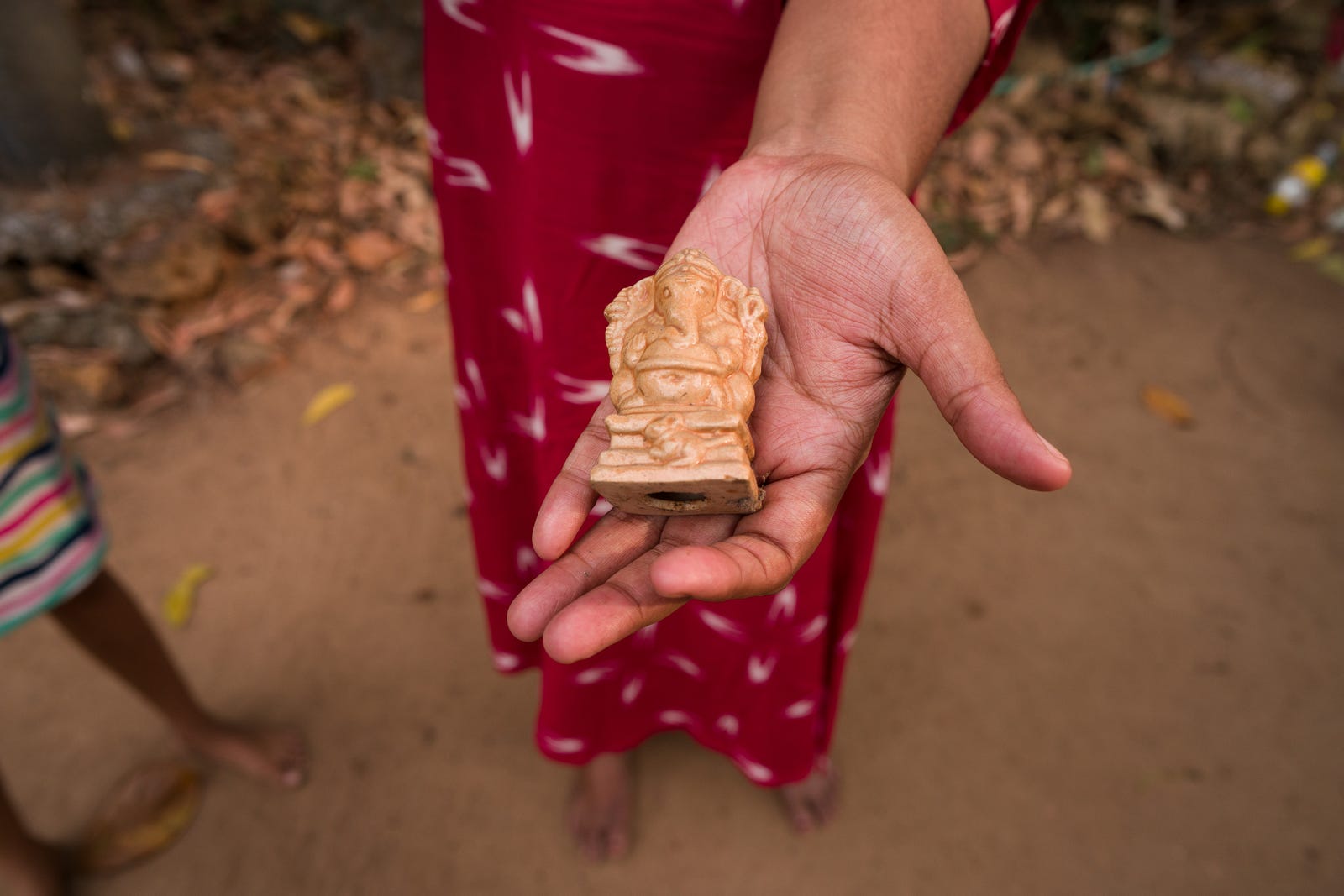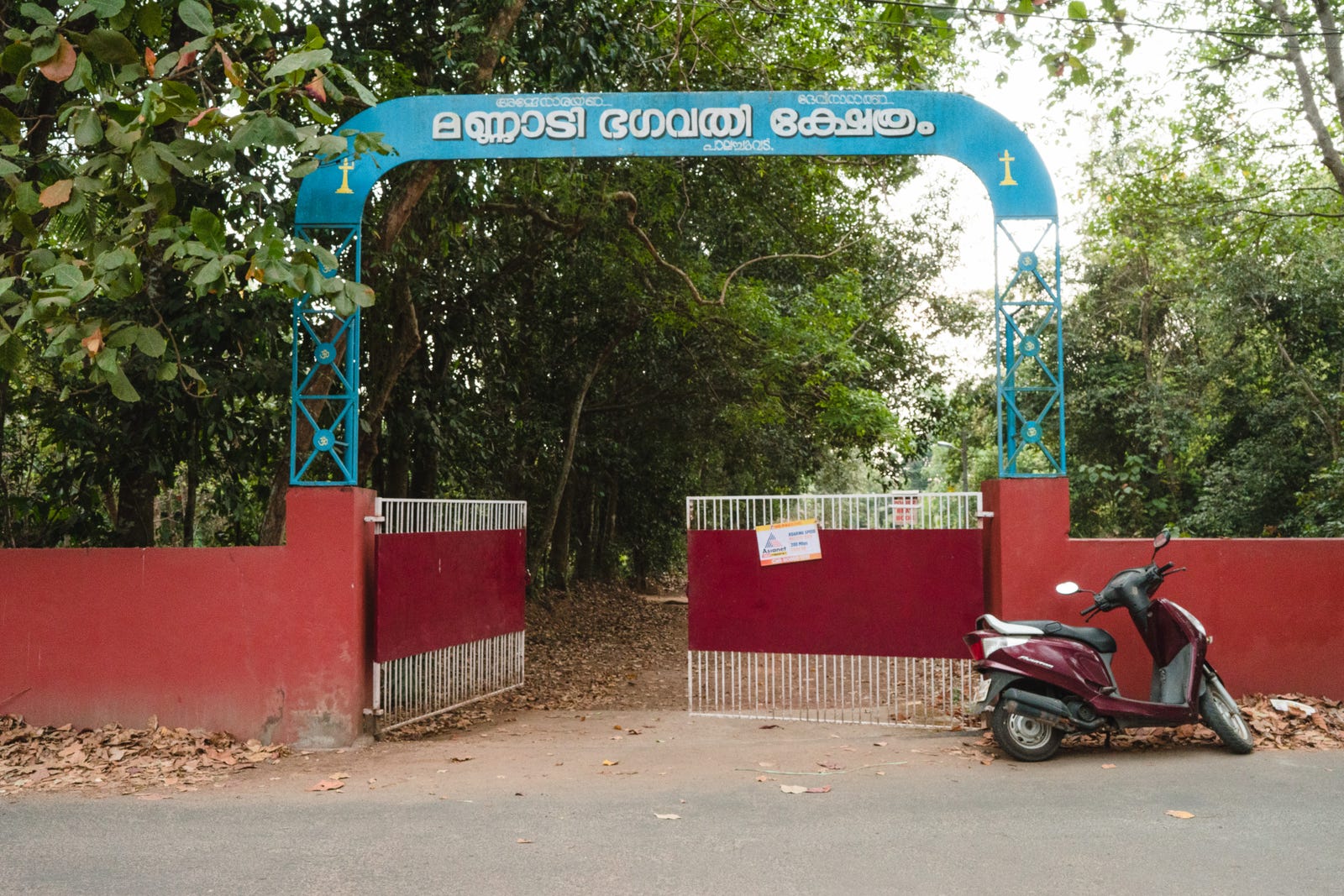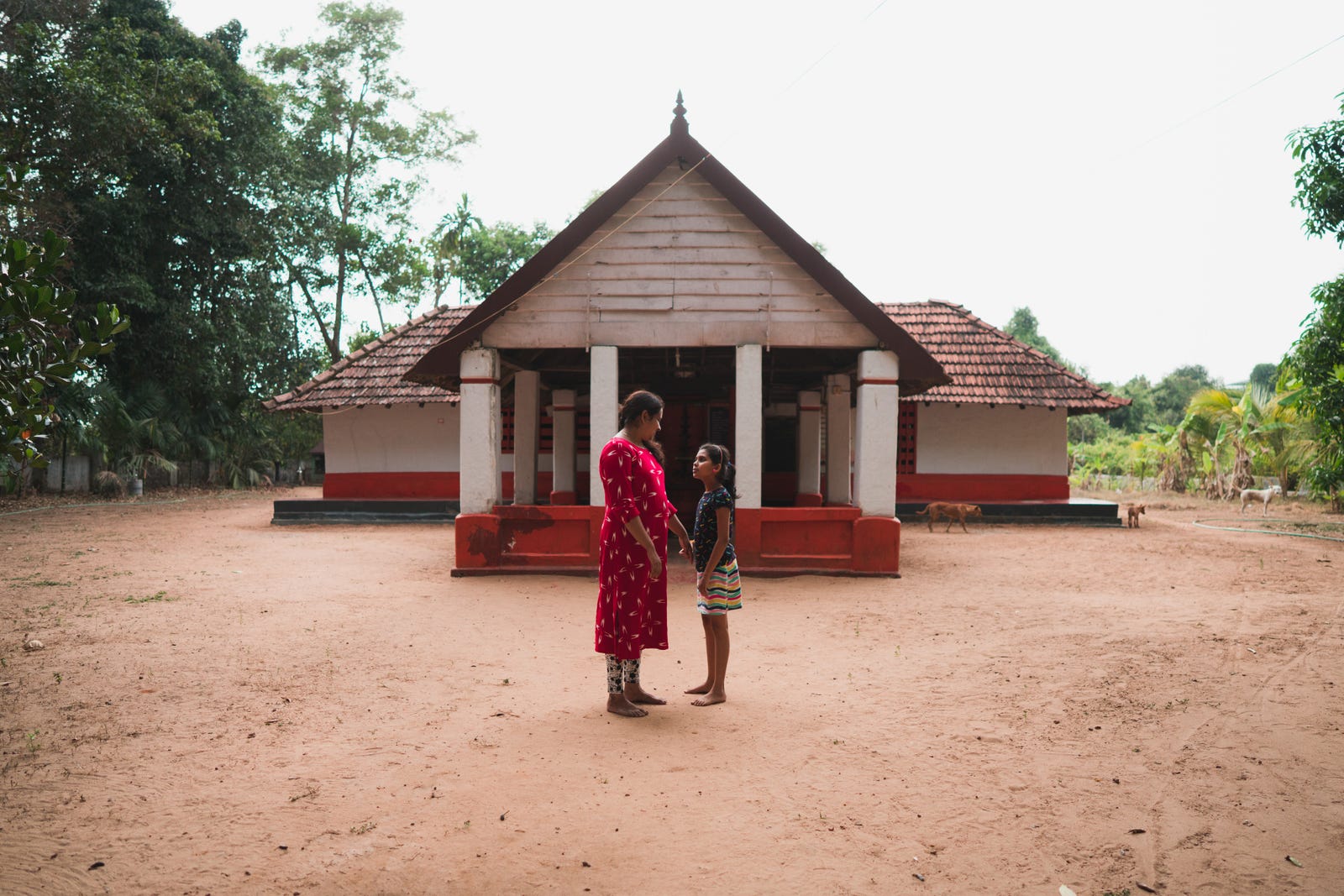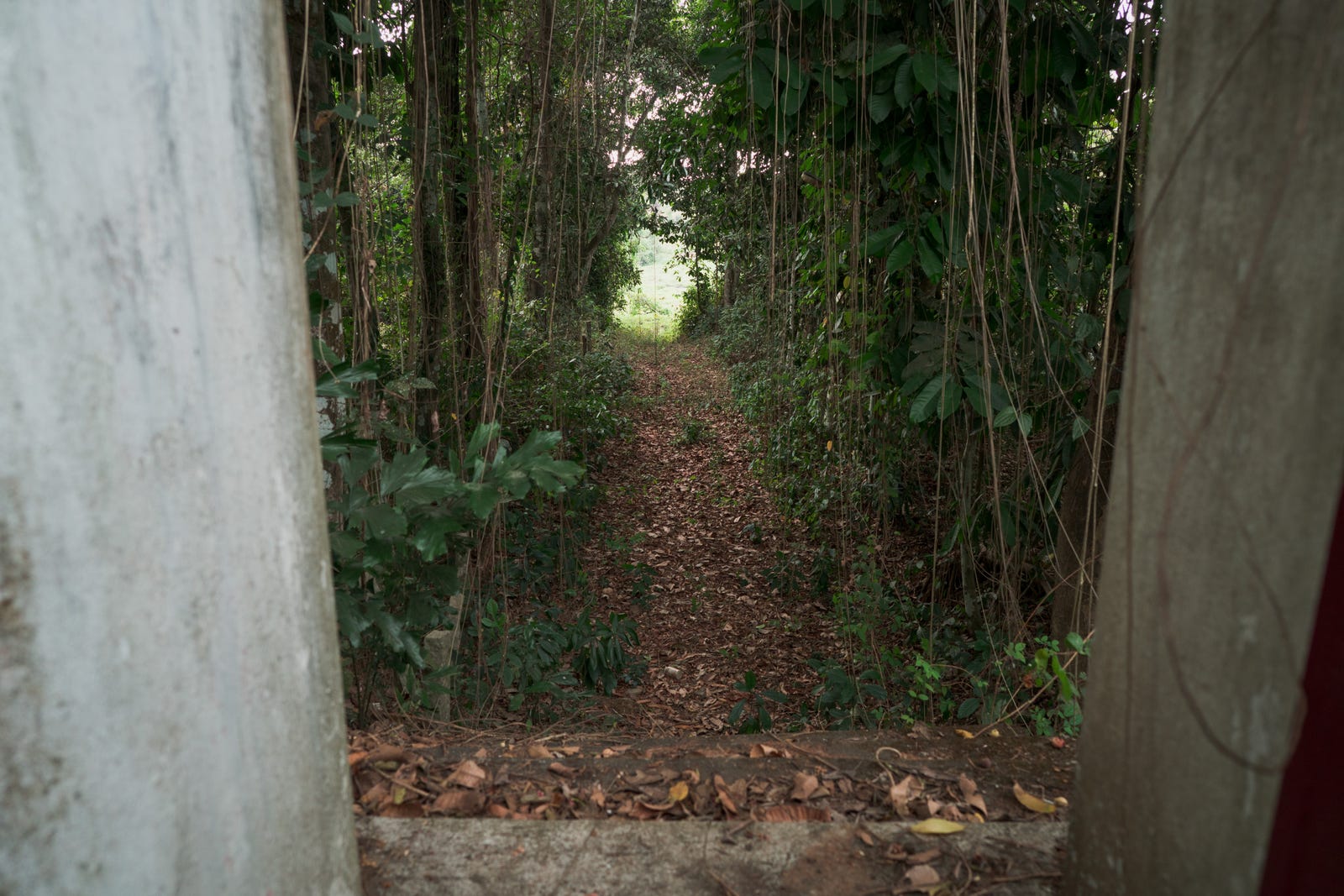
India's Sacred Groves Are Disappearing, Taking Biodiversity and Culture With Them
by Diana KruzmanPast the outskirts of Kochi, a teeming south Indian city of 2.1 million, it’s possible to walk a few short minutes and enter another world. Under a leafy green canopy a 90-minute drive from the city’s busy downtown core, the screech of motorcycle engines is slowly replaced by the trilling of birds. The air is cooler here, pleasant with the aroma of leaves and loam.
This 49-acre section of forest – known as the Iringole Kavu, or sacred grove – is the abode of the Hindu goddess Durga. But it’s also home to dozens of species of birds, bats, lizards, frogs, and other animals, as well as trees like the white dammar and certain types of orchids that are found only in this region of southern India.
Sacred groves are located all over India, but the greatest number can be found here, in Kerala, a southwestern state where heavy rainfall once helped blanket the region in a lush green canopy of lowland forests. Today, most of those forests are gone, lost to urbanisation and agricultural development. Kavus are some of the last remaining pockets of forested land outside of the mountains, but as India’s population grows, landowners are pressured to tear them down and replace them farms or houses instead.
Over the last 60 years, the number of sacred groves in Kerala has shrunk from more than 10,000 to less than 1,500 according to the state’s forestry department. But as awareness of kavus’ importance to medicine, air quality, and cultural traditions rises, scientists and activists are racing to preserve what’s left. And with the impacts of climate change on this corner of India worsening, the status of Kerala’s kavus can serve as a warning sign for other countries trying to conserve forests.
For Achuthan Nair, the director of the Environmental Resource Research Centre in Kerala, preserving the groves will require a collaborative effort.
“There’s a saying in the Malayalam language: ‘One tree cannot be considered a grove,’” Nair said. “Sacred groves are part of our ecological heritage.”
Kavus have been venerated for thousands of years, according to Giby Kuriakose, a botany professor at Sacred Heart College in Kochi who has studied the ecology of sacred groves. Kerala’s ancient Dravidian people preserved pockets of forested land from slash-and-burn agriculture in order to pray to the deities, particularly the snake gods, they believed resided within.
Today, religious practices among kavus vary throughout Kerala. Many groves have their own temples dedicated to just one deity, while others contain multiple shrines, particularly to the goddess Durga, or Kali, and the god Ayappa. In the northern districts of Kannur and Kasargod, groves host theyyam dances, a form of worship through performance that involves elaborate costumes and rituals.
“It is only because our ancestors visualised the importance of preserving the kavu that we are enjoying such pristine lands, at least in fragmented forms,” Kuriakose said.
Mixing animistic and folk religions with Hinduism, kavus have traditionally provided shelter to underrepresented minorities, including indigenous Adivasi people who believe that the spirits of their ancestors live among the trees. Theyyam dancers also come from lower-caste communities that have historically been shunned from temples but revered in the kavus. Beyond their importance to local folk traditions, sacred groves serve as environmental regulators and places of ecological refuge.

A small statue of Ganesh, one of the deities worshiped at Mannadi Kavu. (Photo: ©Richard Tamayo, All Rights Reserved)
Within the groves, rare plants often serve medicinal purposes for indigenous people. A recent survey of the Iringole Kavu found more than 200 species of plants, 30 of which were used as herbal treatments or in traditional ayurvedic medicine.
Animals like the critically endangered Malabar civet, a distant relative of the cat family, find refuge in the kavus that preserve some of the last remnants of their native habitat left in Kerala. Conservationists believe that fewer than 250 of this type of civet remain due to widespread destruction of the state’s old-growth forests.
No studies exist to comprehensively document the biodiversity found in sacred groves, but scientists like Kuriakose are working to piece the story together kavu by kavu.
“The importance is far beyond what we can imagine,” Kuriakose said. “We are only one species among millions.”
Keralans are beginning to realise that importance as India grows increasingly urbanised. Sacred groves help counteract the effects of pollution and higher temperatures from urban centres in Kerala, where 28,000 deaths were attributed to air pollution in 2017. Meanwhile water, seemingly plentiful in a state that receives over 120 inches of rain per year, is becoming scarce as irrigation and industrialisation deplete Kerala’s underground reserves. Artificial surfaces like concrete and asphalt block the natural flow of water through the soil, making it more difficult to reach during the dry summer months.
Sacred groves can help combat this trend, allowing water to percolate and providing a natural filtration system. This stabilizing effect will become even more crucial as climate change is expected to lead to more extreme weather events in southern India, including stronger monsoon rains but also potentially longer droughts.
“If you re-establish the forest, a perennial water system will come naturally,” Kuriakose said. “Wherever trees are growing, you get water in that area.”
Despite their importance, Kerala’s sacred groves began shrinking decades ago when a series of land reform acts passed by the state’s Communist-led government split up Kerala’s large landholdings into smaller areas. Up until that time, a semi-feudal system inherited from British colonial times had concentrated valuable land among a wealthy few. To address this, the Kerala Land Reforms (Amendment) Act of 1969 aimed to give farmers ownership rights over the lands they worked on, while the Kerala Joint Hindu Family System (Abolition) Act of 1975 required large Hindu families to break up their property among their descendants.
But the laws also unintentionally split up the sacred groves, which were traditionally managed by wealthy landlords but were now divided among both farmers and individual heirs. Iringole Kavu – today one of Kerala’s largest kavus – once contained 37,000 acres of lowland forest. Now, that number is down to 49 acres.
The lack of legal protection for sacred groves is a major issue, Kuriakose said. With kavus classified as “revenue land” rather than forest reserves or other areas prioritized for conservation, they are vulnerable to the whims of their owners.
“If I feel that I don’t require this kavu, I may use it for agriculture or for building my house,” Kuriakose said. “I will cut the trees without thinking further.”
Many landowners in Kerala are increasingly disconnected from the land they manage. In 2001, one in every four Keralans lived in an urban area, but by 2011, that number had jumped to one in two. Kavus have become islands of vegetation, hemmed in by housing developments as cities grow up around them.

Roadside entrance to Mannadi Kavu. (Photo: ©Richard Tamayo, All Rights Reserved)
Mannadi Kavu, a 400-year old grove located close to the heart of Kochi, is one such island. Entering the grove from the street, the sounds of traffic slowly disappear just as they do in Iringole Kavu, while leaves crunch underfoot and dappled sunlight makes its way through the trees arching high overhead. A red-roofed temple in the centre provides a space to leave offerings for the deities, but in most places the undergrowth is too thick to walk through and stretches, unbroken, to a low fence encircling the property.
The kavu has been cared for by Vishnu Priya’s family for generations, but about 15 years ago, a section of forest in front of the main temple was cleared and the wood sold when the family needed cash. Though Priya, a 30-year-old doctor, loves the forest, she said that her family could use the land for more economically advantageous purposes, such as agriculture.
So far she has resisted clearing any more of the 23-acre kavu because of her family members, who fear angering the deities by touching the forest that is their home. But she said attitudes are different among the younger generation.
“We have a relationship with this land,” Priya said as the calls of birds and insects cascading down from the canopy of trees above her. “But the value of the land is increasing. When the generation changes, we think we can make something better.”
Kuriakose said these generational changes pose a threat to the kavus as a whole. Growing up in a rural village in Kerala, he used to collect medicinal plants with his father and grandfather, a process that taught him the importance of preserving nature. But he said young people in India today are interacting with nature less and less, and thus see less value in its preservation.
“The traditional knowledge is not being transferred to younger generations,” Kuriakose said. “If you don’t find something to be useful anymore, you will throw it out.”

Vishna Priya and her daughter Rishika standing in front of Mannadi temple. (Photo: ©Richard Tamayo, All Rights Reserved)
But some threats to sacred groves are beyond their owners’ control. Meena Menon, whose family owns three sacred groves about 20 miles north of Kochi in Paravur, has been fighting for years against the Kerala State Electricity Board, which plans to build an electric line that passes directly through the groves. She started an awareness campaign on social media, appealed to local courts and pressured government officials in her district to halt the development.
Menon fears the construction will damage the 200-year-old trees, and the power lines will endanger the birds, civets, and other animals that live there.
“We have an emotional attachment to the grove – it’s a part of our tradition,” Menon said. “We worship the leaves and the snakes and everything inside the grove. We are connected to that system.”
Developments like the power line Menon is fighting have added to the sense of urgency for scientists like Nair, who is working on convincing the government that kavus need to be protected. In March, his organisation began studying sacred groves’ ability to sequester carbon pollution in three districts in Kerala. The study, sponsored by India’s Ministry of Earth Sciences, will look at how the groves absorb carbon dioxide from the atmosphere and what it could mean for climate change.
The government has responded to calls to protect sacred groves in other ways. For the last decade, Kerala’s Forest Ministry has offered monetary incentives to landowners who agree not to develop their kavus for a period of one to three years, after which they must apply again to renew their funding. But the government prioritises kavus that demonstrate the most biodiversity and cannot approve all applications. In 2019, the ministry selected 59 kavus for funding out of a pool of 150.
Nair believes these incentives alone are not enough, arguing that legislation and enforcement to protect sacred groves are the only guaranteed path toward preservation.
Otherwise, as kavus are whittled down bit by bit, the biodiversity preserved within them – from endangered animals to medicinal plants – will be lost or irreparably damaged. And with most of south India’s lowland forests already lost to development, kavus are some of the last remnants of these ecosystems, as well as religious practices such as Theyyam dances.
Both Nair and Kuriakose said that preserving the kavus will require a larger awareness among the public as well as in the government of their importance to India’s cultural and ecological heritage. For Kuriakose, this means teaching children from a young age and bringing them to the kavus to see the forest for themselves. He hopes this will connect Keralans to their roots and inspire them to protect forested land rather than convert it to other uses.
“If I cannot see the service the land does for me, how will I believe in it?” Kuriakose said. “Awareness has to go in the right direction and with continuous effort.”

A lush patch of forest that is part of the Mannandi Kavu. (Photo: ©Richard Tamayo, All Rights Reserved)
Diana Kruzman’s work has appeared in USA Today, Reuters, The Oregonian, LAist, Religion News Service and the GroundTruth Project. She graduated from the University of Southern California in 2019 and is now working on her Master’s degree in journalism at New York University.
Richard Tamayo is a Los Angeles-based visual journalist whose work focuses on issues centred around migration, climate change and land management. He can be found on Instagram and Twitter.
Featured image: ©Richard Tamayo, All Rights Reserved